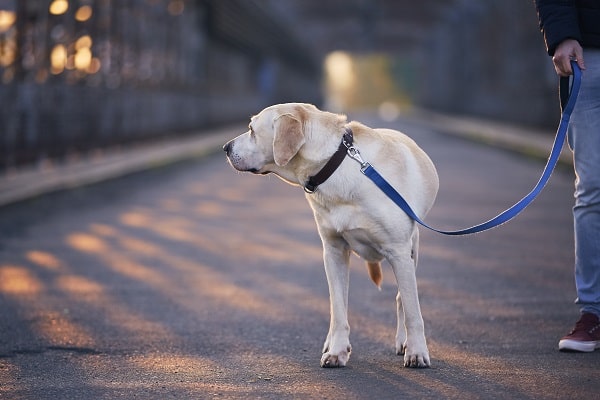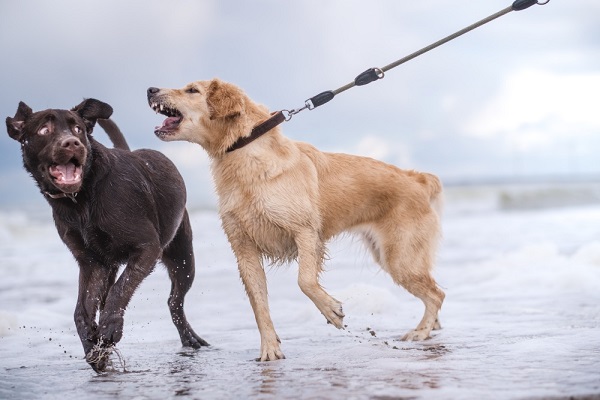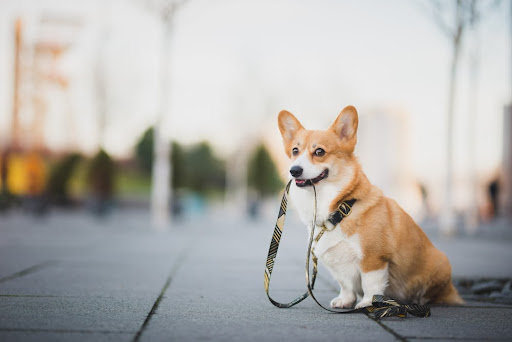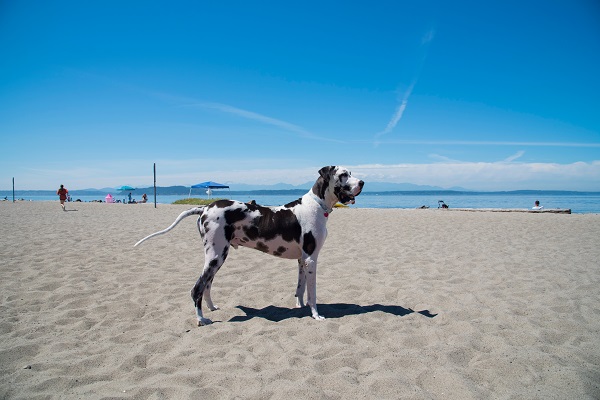It seems trivial, but a leash is one of the essential tools you will use with your dog throughout his lifetime. Through the training and teaching of puppyhood to the many happy outings together during your dog’s senior years.
How else are you prefer to keep your dog where you want him to be, doing what you want him to do, especially around others? A leash is crucial for providing control and enforcement.
You may think it would be easy, but when you walk into a pet supply store, you may be overwhelmed by the variety of choices. Besides keeping your dog safe, what other goal do you have in selecting a leash? Or to set the speed for a comfortable walk
Let us help you with that decision. In this guide to best dog leashes, we will find everything you need to know before buying a leash.
Why Do You Need a Dog Leash?
If your dog is well-trained, you might wonder why you need a leash. Unfortunately, leash laws exist in many locations, and owners who fail to follow the legal condition face steep fines.
Even the best-trained dog might have a slip-up. What if your dog sees a squirrel and takes off after the rodent? Without a good leash, the dog could readily run away or accidentally cross a busy roadway where the dog could get hit by a car.
Here are a few benefits of a dog leash:
- A simple and efficient means of controlling your dog while training.
- Provides control over the dog
- Stops your pet from running off.
- It saves your dog from potential life-threatening mishaps.
- It provides behavioral management.
- It keeps your dog from bouncing up on other people who get too close.
Different Types Of Dog Leashes
1. The standard flat leash
A standard leash works well for daily use. It generally has a metal buckle on one end where you hook the dog’s collar and a loop at the other to work as a handhold. You will find standard leashes in different sizes, 4 and 6 feet being the most standard lengths.
Standard leashes are heavier and often fashioned from the pet-safe chain, nylon, or leather. A 6-foot dog leash performs well for an average-sized dog and is considered by dog trainers.
2. Retractable leashes
Retractable leashes are one of the most contentious parts of the dog leash world. While they’re famous with many dog owners, professionals warn against them because of the limited control that they give you over your pup.
These leashes also come with a few potential risks, such as rope burn if you grab the leash while your dog tries to run away. Moreover, retractable leashes are best for well-behaved dogs on the leash and owners who are comfortable giving their pets more lead room.
3. Adjustable dog leashes
An adjustable dog leash might be the best fit for people who want the flexibility of retractable leashes and the control of a standard leash. These leashes can go between 3 and 6ft by removing or adding loops or hooks along the length.
An adjustable leash is an excellent option for pet parents training for a longer lead room. Moreover, if you want a longer leash for more freedom while on walks or a shorter leash for training, the adjustable dog leash can provide you with the best of both worlds.
What type of material is used to make Dog’s Leash?
Each type of design and material has unique pros and cons, which you must consider before deciding.
❖ Leather Dog Leashes
A true masterpiece, a leather leash is functional and stylish. Leather is known for its great durability, which is best for big breeds that easily pull. Unlike fabric leashes, leather is less likely to tear from use and is also a fashionable choice.
Pros:
- Durable and Long-lasting material
- Leather softens over time while staying functional
- It gives a firm, solid grip texture
Cons:
- It can be more costly
- Damaged in water
- Leather can crack if folded or bent too tightly
❖ Nylon Dog Leashes
The nylon dog leash has gained popularity as one of the most famous types of leash material. The reasonable material delivers good durability for an affordable cost. In addition, you can find these leashes in many patterns and sizes to give your dog a little flare.
Pros:
- Easy to wash and clean
- Does not shrink
- Dries quickly
- Available in a wide range of patterns and colors
Cons:
- One of the best leashes for a curious pup to chew through
- Hard on hands and can easily burn your skin if the dog unexpectedly pulls
❖ Polypropylene Dog Leashes
Polypropylene is an excellent option if you want something odor-resistant and weather-resistant. It’s flexible and lightweight, making it perfect for daily use. These leashes come in various colors and have a unique side-release buckle to control unexpected releases.
Pros:
- Soft and flexible material
- Waterproof and odor-resistant
- Lightweight but still long-lasting
Cons:
- It can be more expensive
- Less style and pattern variety
❖ Chain Dog Leashes
Chain dog leashes are still one of the least familiar dog leash materials. It is because of the heavier weight and limited selection, but the main problem with chain leashes is that they make a dog look aggressive.
Pros:
- Stands up to a dog’s chewing
- Strong for large breeds and heavy-duty nylon
Cons:
- So heavy, not great for small or skinny-necked breeds
- It can damage teeth if puppies decide to chew
- Hard on the hands
Check out your options and choose the best fit for your dog’s regular activities.
How to Use a Dog Leash?
You might have a good idea of how to use a dog leash, but the inappropriate use of the device can cause severe problems. A dog’s neck is one of the most sensitive parts. Pulling the leash too hard or too long cause nerve damage. Effective use of a dog leash is a crucial component of responsible dog ownership.
Here are a few necessary instructions on how to use a dog leash properly:
- Attach the leash to the dog’s harness or collar.
- Avoid covering the leash around your wrist. Instead, place your hand through the handle. It will give you a great grip, and you can use the back of your hand to stabilize the leash if your dog pulls.
- For hard pullers, control and hold the leash with both hands. Always use your right hand to grasp the dog’s leash.
- Do not harshly pull back on the leash, as this could harm your dog.
- Grab the leash closer to your small dogs when you come to the roads to teach your pup to sit and wait for demands to cross the road.
Choosing The Right Length
➢ 4 FT
For high-traffic areas, such as a busy city street, the 4ft dog leash is perfect. This length saves your dog from getting in others’ way or wrapped around lampposts and poles. Moreover, size can also be helpful in circumstances where your dog might feel forced to wander before they’ve been taught to stay at your side.
➢ 6FT
6FT is the standard length for dog leashes and is perfect for walking in neighborhoods or less traffic areas. A 6ft leash lets your dog room to explore without leaving so much slack or getting tangled around your dog’s legs or your own.
➢ 8-10 FT
If you want a longer leash for training, you can try an 8-10ft leash. This length allows you to keep control of your dog but also allows for more distance between you.
➢ Long line leashes
Long line leashes are utilized for distance command training and range from 50-150ft long. A long-line dog leash is perfect if you train your dog in long sits, stays, or recall commands. Using a long-line leash can maintain distance from your dog while keeping a connection and some control.
Read Also: Leash Reactive Dogs: Signs, Causes, and Training
Things to Consider When Buying the Best Dog Leashes
If you have been shopping for a dog leash, you are mindful of many choices. As a result, you might feel overwhelmed, wondering which one will be the best for your dog. Here are a few things to think about before you buy:
● Is your dog big?
If your dog is big and heavy, you need a solid leash that can stand up to the canine’s strength. Always consider the long leash material, thickness, and buckle quality before buying. Your dog can pull you more quickly if you have a long leash. Try to pick a shorter leash with durable leather, which gives a good grip.
● What are the laws in your location?
Many cities and communities in Canada have local laws that outline leash needs. Always take the time to examine your particular area’s rules. Many also draft the required leash lengths, so you’ll want to factor in your area’s leash needs before deciding.
● Length Size, and Freedom:
If your dog is small in stature or well-behaved, consider a retractable leash that gives your dog more freedom to explore on your outings. However, if your dog is strong, big, or aggressive, you can choose a heavy-duty shorter leash that gives you superb control.
● Leash Feel:
Think about your hands and a good grip. Some people enjoy the soft feel of leather, and others lightweight nylon leashes. Moreover, there are many leashes that also have neoprene padding for optimum gripping ease.
Read Also: Tips for Hiking with a Dog with Leash Reactivity
Conclusion
Whether for daily use or taking your dog out on fun experiences, a dog leash is not a luxury but a compulsory tool for any reliable dog owner. The right leash can allow you and your pet to get the most out of your outings.
However, don’t limit your dog to just one leash. Moreover, if you love to take your dog on all your favorite adventures, you might need two or more different dog leashes to keep your dog safe.
I hope this article will help you get a perfect leash according to your dog’s needs and requirements.

 DogExpress
DogExpress






















 in Chandigarh, India.
in Chandigarh, India. 
